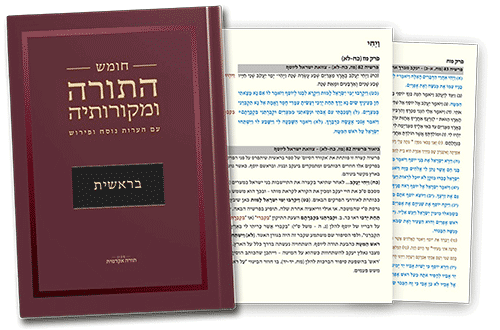 Edit article
Edit articleSeries
Part 9
Evaluating (Proto-)MT

Carpet page of the Leningrad Codex, 1009 CE
It is standard academic practice to compare the Masoretic Text to other text traditions. NJPS compares small details with other textual, while many scholars offer more extensive comparisons. Scholars have found thousands of small differences between MT and the LXX, SP, Dead Sea Scrolls, and all the other sources, and it is natural to try to form an opinion on which reading that is “better” or “more original.”
Scholars express different views on the comparative value of MT versus the other texts. I hesitate to present my own views, not only because they change all the time, but also because it is very difficult to summarize them in an overview.
I will nevertheless present a few highlights.
a. Quality. Grosso modo, MT and its forerunner, proto-MT, is an excellent text, as exemplified below, especially for the Torah, and it is therefore no coincidence that this text has become the central text of Judaism. It has been copied very carefully from a certain point onwards, although we cannot pinpoint that moment. It probably preceded the time of our earliest evidence, namely the third century BCE.
b. Early Mistakes. Before that time, the proto-MT was copied less precisely, and these imprecisions in content (e.g., mistakes in 1 Samuel) and spelling have been carefully preserved in the proto-MT scrolls and the medieval MT.
c. Torah without Harmonizations. The MT of the Torah lacks the frequent harmonizing pluses of most other texts, especially the LXX, SP, and the exegetical and liturgical texts.[1]It also lacks the editorial pluses of SP and the frequent changes inserted by exegetical texts like 4QRP (Revised Pentateuch).[2]In other words, MT of the Torah is conservative, since the other witnesses freely altered the earlier text. As a result, the preferential position of MT in the Torah is a remarkable feature of that text. It may well be that also elsewhere in Scripture, MT reflects such a preferable text, but because there are insufficient differences between the texts, such a relation cannot be proven.
d. Different Editions of Books – In several instances, the LXX and the MT seem to have different editions of the same book. In these cases, the LXX differs from MT not in small textual details, but in groups of related features that reflect a different stage in the literary development of the book than MT:
- The short (and somewhat different) text of Jeremiah (in this case LXX is joined by two Qumran scrolls),
- The short text of Ezekiel,
- The different text of Joshua,
- Sundry shorter or different texts, such as MT and LXX of 1 Samuel and Proverbs.
In my view, the LXX versions probably preceded those of MT in these cases. In other cases the Hebrew texts underlying the LXX were in the nature of exegetical texts commenting upon MT (1 Kings, Esther,[3] and Daniel).
The MT in Sum
The upshot of this analysis is that MT is a mixed bag containing units that reflect a conservative tradition and those that do not, units that seem to be later than the LXX (Joshua, Jeremiah, Ezekiel), and units that are earlier than the Vorlage of the LXX (1 Kings, Esther, and Daniel). Each book of scripture was produced at a different time by a different scribe, reflecting his personal character.
Overall, compared with the other known texts, MT is generally the best text available. By “generally” we mean that this is not the case in all words or all verses, nor in all books.
TheTorah.com is a 501(c)(3) nonprofit organization.
We rely on the support of readers like you. Please support us.
Published
December 8, 2017
|
Last Updated
September 4, 2025
Previous in the Series
Next in the Series
Before you continue...
Thank you to all our readers who offered their year-end support.
Please help TheTorah.com get off to a strong start in 2025.
Footnotes

Prof. Emanuel Tov is J. L. Magnes Professor of Bible (emeritus) in the Dept. of Bible at the Hebrew University, where he received his Ph.D. in Biblical Studies. He was the editor of 33 volumes of Discoveries in the Judean Desert. Among his many publications are, Scribal Practices and Approaches Reflected in the Texts Found in the Judean Desert, Textual Criticism of the Bible: An Introduction, The Biblical Encyclopaedia Library 31 and The Text-Critical Use of the Septuagint in Biblical Research.
Essays on Related Topics:










